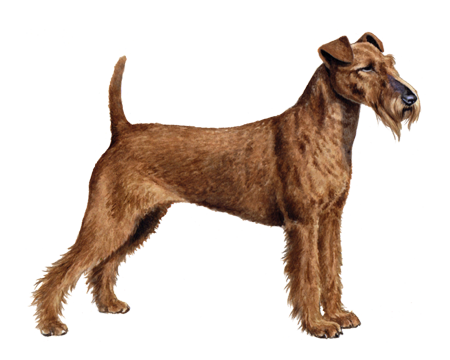
Patterdale Terrier
Little pups with a lot of heart, Patterdale Terriers make trusty, hard-working farm dogs and loyal, energetic companions.
Interested in discovering if your dog is a Patterdale Terrier?
Check out Wisdom Panel's DNA tests.
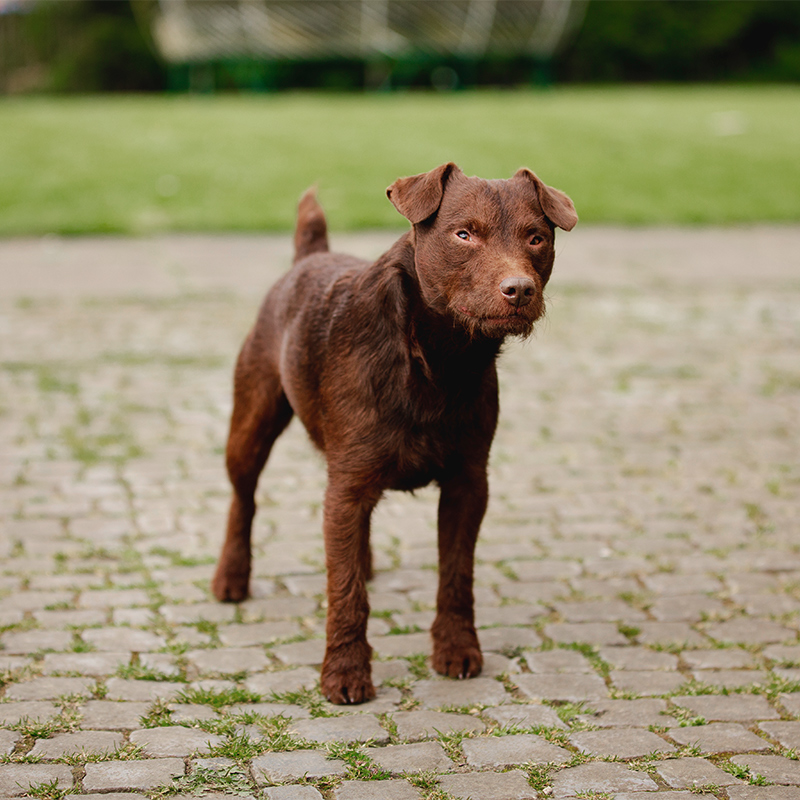
Patterdale Terrier Traits
General Appearance
Patterdale Terriers are small, sturdy dogs with square bodies. They have strong necks, powerful jaws, and enough flexibility to squeeze through tight passageways when tracking quarry.
Coat and Coloring
Patterdales have three coat types: smooth, broken, and rough. Smooth coats are coarse, dense, stiff, and have no wave. Broken coats have coarse, wiry (and sometimes wavy) guard hairs that are longer than the smooth coat type's. Dogs with broken coats may also have facial furnishings that form a beard, mustache, and eyebrows. Lastly, rough coats are coarse and longer than the other coat types, and they always have furnishings.
Standard coat colors for this breed include black, red, chocolate, grizzle, black and tan, and bronze. Patterdales can be solid or have white markings on the chest and feet.
Distinctive Physical Traits
These dogs have wedge- or trapezoidal-shaped heads (when viewed from the front), triangular ears that fold tightly just above the skull, and wide-set eyes. Their legs are strong and muscular, and their tails sit high, but they don't arch over the back.
Patterdale Terrier Temperament
Patterdales are terriers through and through. They're feisty, loyal dogs that make excellent companions for experienced pet parents looking for a high-energy sidekick.
These social dogs like to be around their people. They're prone to separation anxiety and may be destructive if left alone for long periods. Patterdales also need socialization when they're puppies to prevent them from being fearful of or reactive toward strangers. This process of introducing a pup to different people and environments when they're young helps them grow into a well-adjusted adult dog.
Because of their strong prey drive, Patterdales may not be a good fit for homes with other small pets. They also require a secure, fenced yard to keep them safe (and keep neighborhood critters safe from them).
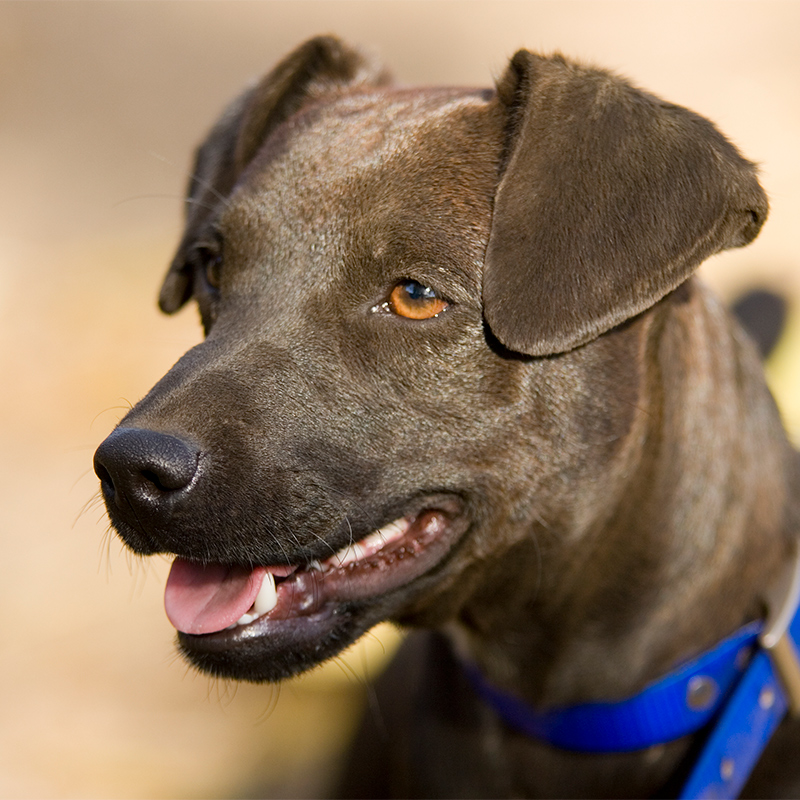
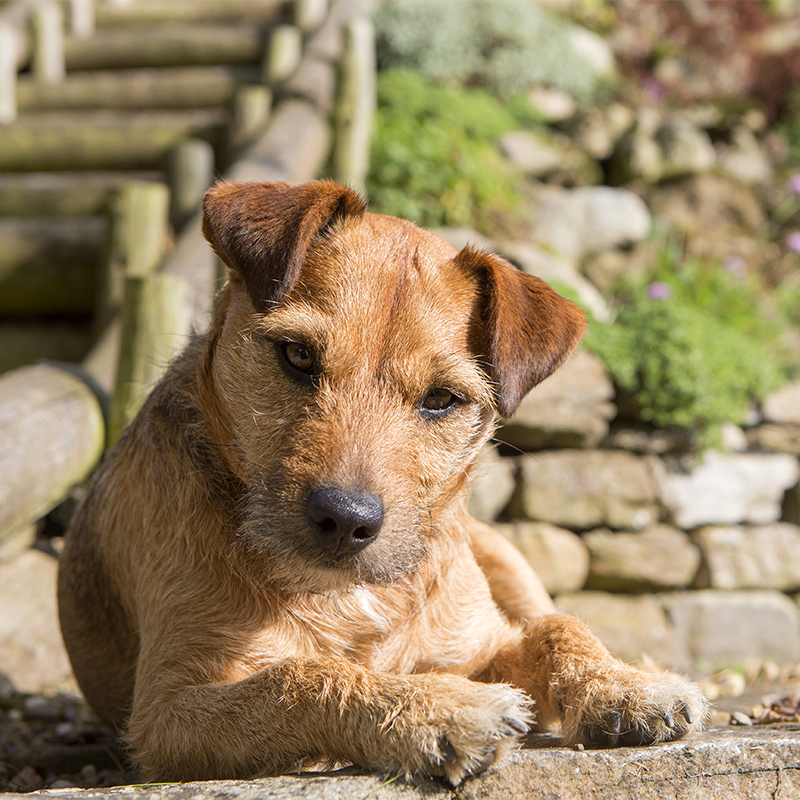
Patterdale Terrier History
The Patterdale Terrier originated in the rugged Lakes Region of Northern England. Experts believe they descend from the fell terrier—which isn't a breed but rather a group of long-legged working terrier breeds from Great Britain. This group also includes the Patterdale Terrier, Lakeland Terrier, and the Scorrier Terrier. Sometimes called Fell Patterdale or Borderlakeland, the Patterdale Terrier is a subtype of the Lakeland Terrier.
British farmers used the Patterdale to hunt foxes that threatened their flocks of sheep. These tough little dogs would either flush foxes from their rocky dens or quickly dispatch them if they put up a fight. When the breed arrived in the United States, it continued its working-dog way—hunting raccoons, nutria, and fox.
In their early days, these pups earned a reputation as tireless and tenacious workers. Today, they receive equally high marks as eager-to-please companions and entertaining pets. The United Kennel Club recognized the Patterdale Terrier in 1995.
Patterdale Terrier Care
Nutrition
Patterdale Terriers thrive on a high-quality diet formulated for their life stage (e.g., puppy, adult, senior) and energy level. To help your dog maintain a healthy weight, keep an eye on their food intake and measure their portions to avoid overfeeding. And remember, treats should make up no more than 10% of a dog's daily calories.
Patterdale Terriers may become possessive of food during mealtimes. If you notice any signs of aggression or resource guarding, talk with your veterinarian or a trainer for tips on addressing this behavior.
Grooming
To remove loose hair, brush your Patterdale's coat weekly with a slicker brush. This will also help prevent tangles from forming on the longer-haired coat types. Round out their grooming routine with regular nail trims, ear cleanings, and the occasional bath.
It's also wise to establish a good dental hygiene program. Dental disease is one of the most common health conditions in adult dogs. Left untreated, it can contribute to other serious issues. Professional cleanings and at-home teeth brushing will help reduce dental risks for your pup.
Exercise
Patterdale Terriers are energetic dogs that need a lot of mental and physical exercise. Multiple leashed walks per day, long hikes or runs, and romps in a fenced backyard will all help your dog burn off excess energy. This breed also excels at activities such as agility, rally, and competitive obedience.
Training
True to their terrier ways, Patterdales are both intelligent and stubborn. So, when training this breed, use a firm but gentle approach. And try to keep training sessions fun and engaging through plenty of positive reinforcement.
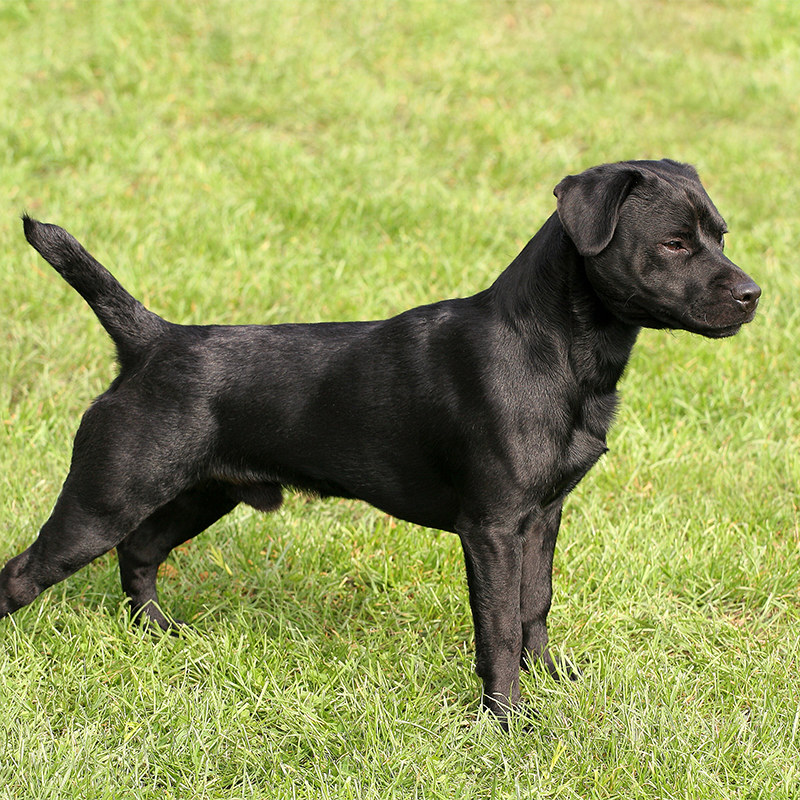
Patterdale Terrier Genetic Health Conditions
-
Primary Lens Luxation
Primary Lens Luxation (PLL) is a condition that can cause the lens of the eye to become loose and eventually displace. The disorder is caused by degeneration of the fibers that hold the lens in place.
Knowing if your Patterdale Terrier is a carrier or at-risk for these conditions can help you and your veterinarian plan for your pup’s lifelong care. With Wisdom Panel™ Premium, you can get results for over 200 genetic health tests.
Breed Group
Terrier
The Terrier Group ancestors were bred to hunt and kill vermin. They are often characterized as feisty and energetic dogs whose sizes range from fairly small to much larger.





















